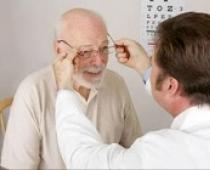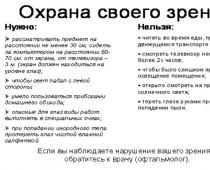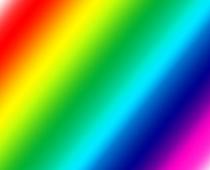Cameras. Camera. Optical instruments. My device is in physics. Eye as an optical device. Device magnifying devices. Optical devices in medicine. Subject: "Optical device-eye". Eye as an optical device and vision. The history of the development of the camera. The department "Electronic devices and devices." Theme of the lesson: "Electric lighting".
Classification and designation of semiconductor devices. A compass is a device that helps determine the direction of the world. Stopsleep - a device for drivers and not only. The most amazing optical device. Physical phenomena in optical devices. CRAB (a device for a comprehensive assessment of the performance of athletes).
Examples of new products. Samovar is a physical device. Inventors of the 18th century in Russia. Appliances for personal hygiene. Optical devices in physics grade 11. Instruments and methods for radiometric measurements. The need to create counting devices V.Ya.Bunyakovskim.
Presentation on the topic "Optical Instruments"
And what is it, optical devices?
Optical devices are devices in which the radiation of any region of the spectrum (ultraviolet, visible, infrared) is converted for normal perception by the human eye.
Optical devices equipping the eye Devices for viewing small objects (magnifiers and microscopes) Devices for viewing distant objects (telescopes, telescopes, binoculars, etc.) Angular magnification - the ratio of the viewing angle when observing an object through an optical device to the viewing angle when observing with the unarmed eye (characteristic of the optical device)
Lens from German Linse from Latin lens lentils
This is a piece of optically transparent homogeneous material, bounded by two polished refractive surfaces of revolution, for example, spherical or flat and spherical.
The eye as an optical device The eye is an optical system that gives a reduced, inverse, real image on the photosensitive mesh of the eyeball. The main element of the optical system of the eye, the lens - is a biconvex lens. The curvature of the lens surface can vary, so it is always possible to bring an image of the object to the surface of the retina. This process is called accommodation of the eye. The aqueous humor of the anterior chamber, lens and vitreous body are a single optical system of the eye.
What this eye doesn’t look at
A camera (photographic apparatus, camera) is a device (device, mechanism, design) for obtaining and fixing still images of material objects with the help of light.
A telescope (from other Greek languages τῆλε [tele] - far + σκο πέω - I see) is a tool that helps in observing distant objects by collecting electromagnetic radiation (for example, visible light). The picture taken by the telescope
Magnifier - a collecting lens or lens system with a small focal length The magnifying glass is placed close to the eye, and the object is placed in its focal plane - the angle at which the object is seen in the magnifying glass. F is the focal length of the magnifying glass. - the angular magnification of the magnifying glass. The magnification given by a magnifying glass is limited by its size. Loupes use watchmakers, geologists, botanists, coin collectors
Magnifier angle of view, under which the object is visible to the naked eye. d0 = 25 cm - the distance of the best view. h is the linear size of the subject.
The magnifying glass is placed close to the eye, and the object is placed in its focal plane - the angle at which the object is visible in the magnifying glass. F is the focal length of the magnifier. - angle magnifier
Microscope Microscope has opened a new world to man, having far apart the borders of our natural vision. No less than in the depths of a heavy whale We are a small worm of parts with the addition of pressure Kohl a lot of the microscope we discovered Invisible particles and subtle veins in the body! wrote M.V. Lomonosov in the “Letter on the benefits of glass”
The presentation has come to an end, I hope you enjoyed it
I. To repeat, expand students' knowledge on the main topics of the “Optics. Geometric optics. Lenses, optical devices. ”II. To study the device and principle of operation of optical devices. Iii. Discuss the scope of the use of optical devices in technology, industry, medicine and life. IV. Analyze the feasibility of using optical devices in medicine. V. Summarize the topic.
Introduction Preparation for the perception of a new material: - a repetition of the material studied, - individual work with a crossword puzzle. 2. Study of the new material “Optical Instruments” (presentation): -device, principle of operation of optical instruments (eye, magnifying glass, microscope, telescope), - group work and performance of a representative of a group (forward task). 3. Fastening the material. (group work with equipment and cards) 4. Reflection. - analysis of work and conclusion. 5. Summing up, d / s.
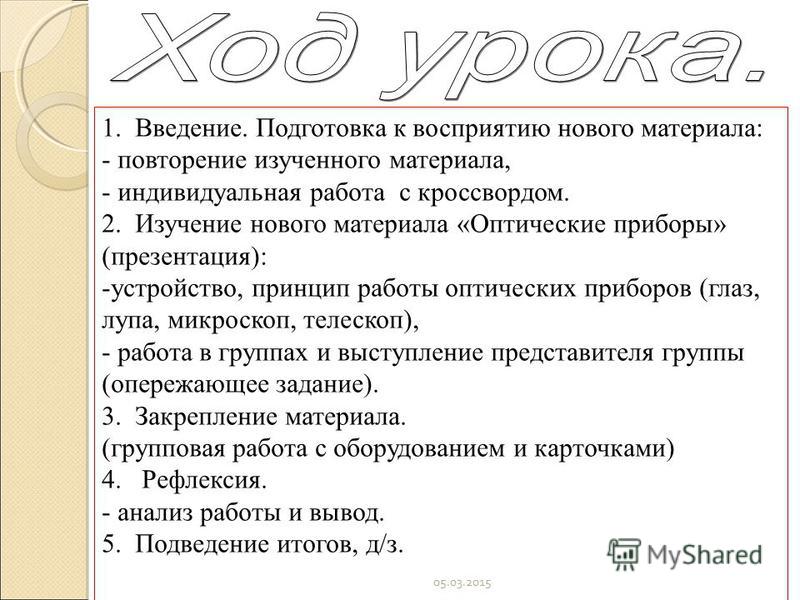
![]()
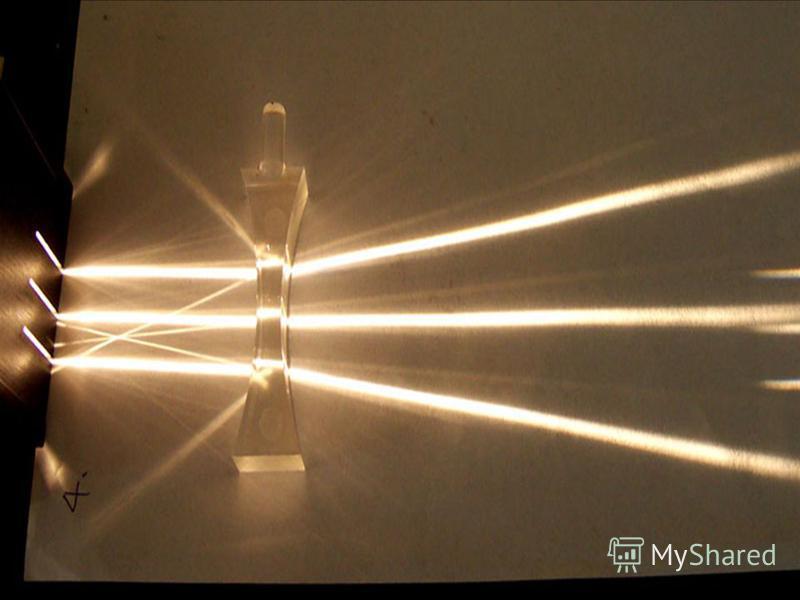
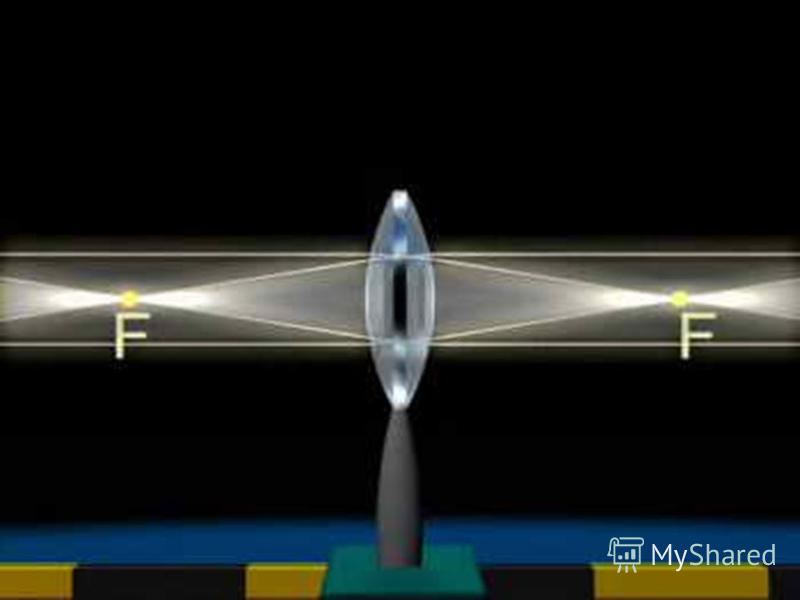

What lenses are there? The lens is a transparent body, bounded on both sides by spherical surfaces. What is a lens? Convex - lenses whose edges are much thinner than the middle. Concave - lenses whose edges are thicker than the middle Convex - lenses whose edges are much thinner than the middle. Concave - lenses whose edges are thicker than the middle


Crossword. Horizontal: 1. Transparent body bounded by two spherical surfaces. 2. Line, which is the axis of the narrow light beam. 3. An optical device used for observations from tanks and submarines. 4. Lack of vision at which the distance of the best vision exceeds the normal value. 5. The image in which the bright places of the photographed object look dark and vice versa. Vertical: 1. Electromagnetic waves that can cause a person's visual sensations. 2. The ability of the eye to adapt to the vision, both at close and far distance. 3. Lack of vision, in which the parallel rays after refraction intersect closer to the lens. 4. The point at which the parallel rays intersect after refraction in the lens. 5. Unit of optical power.

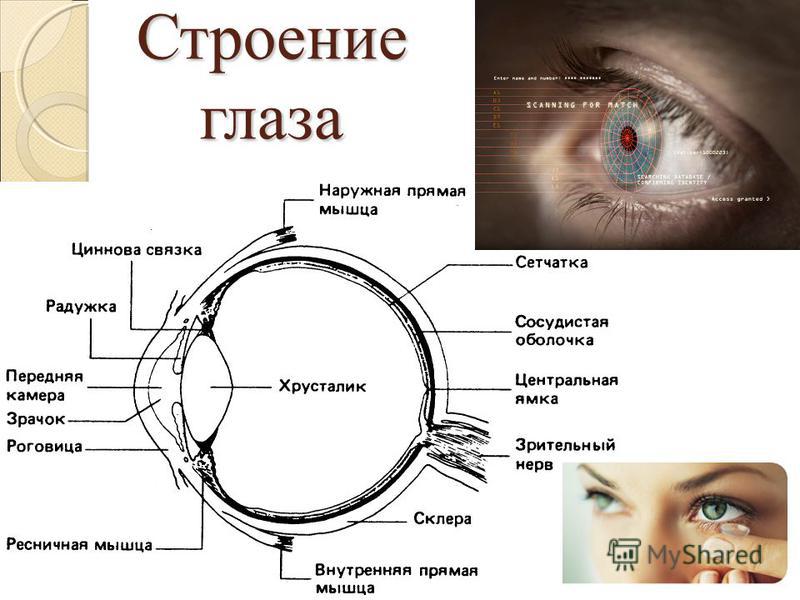
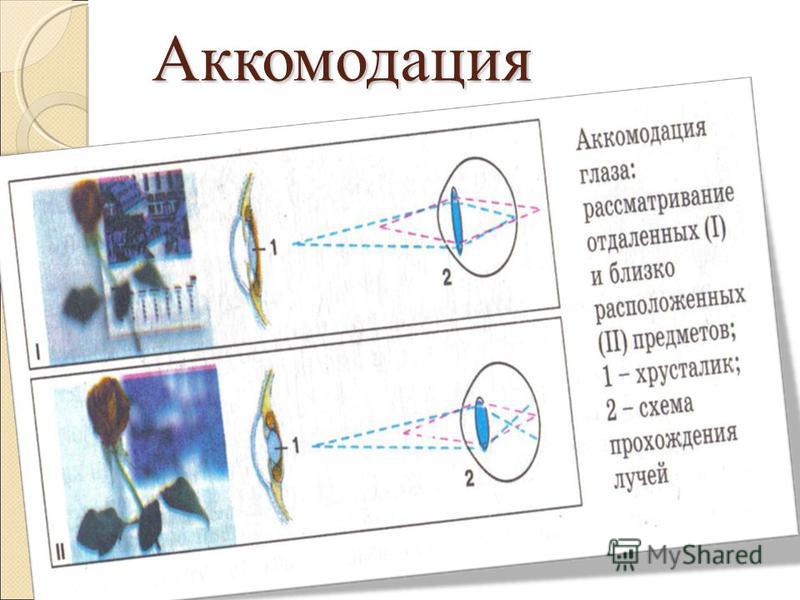
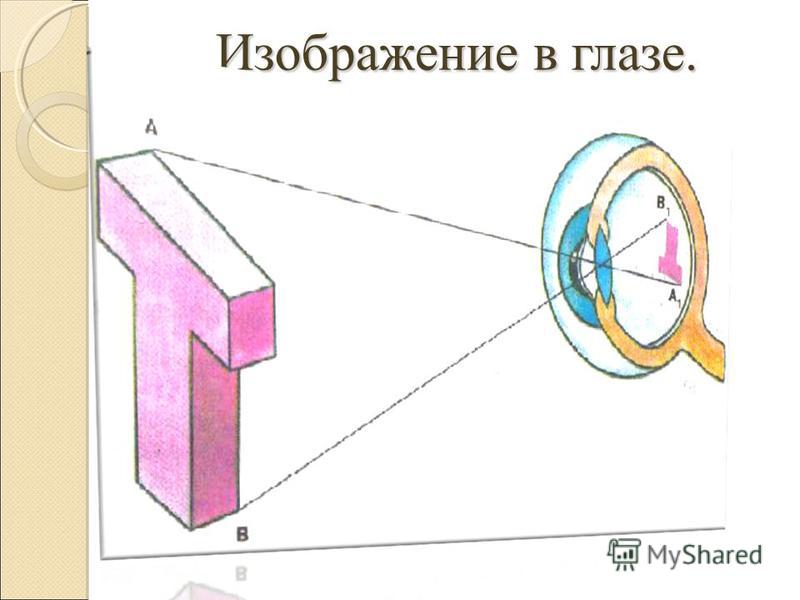
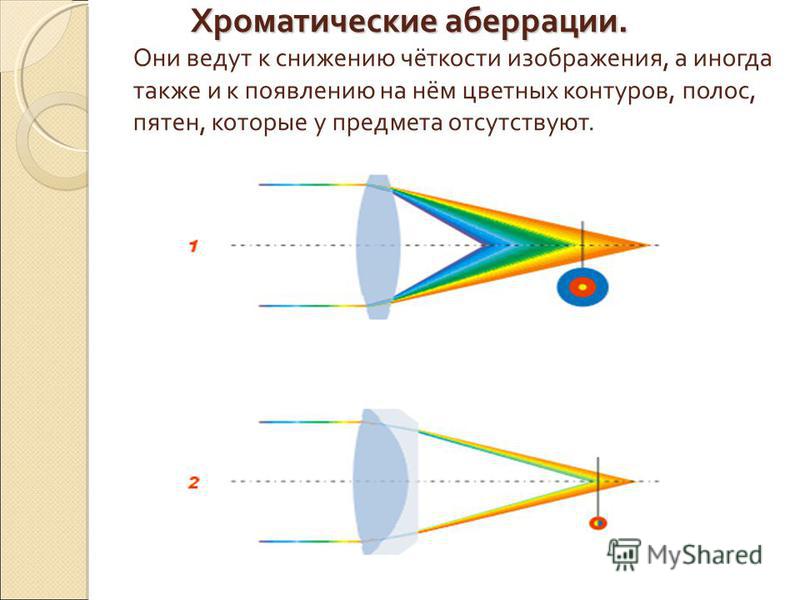

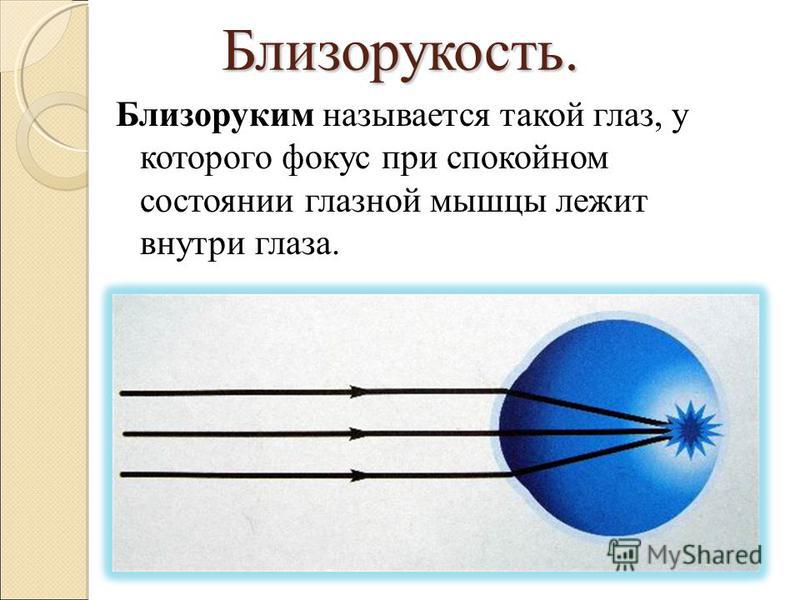
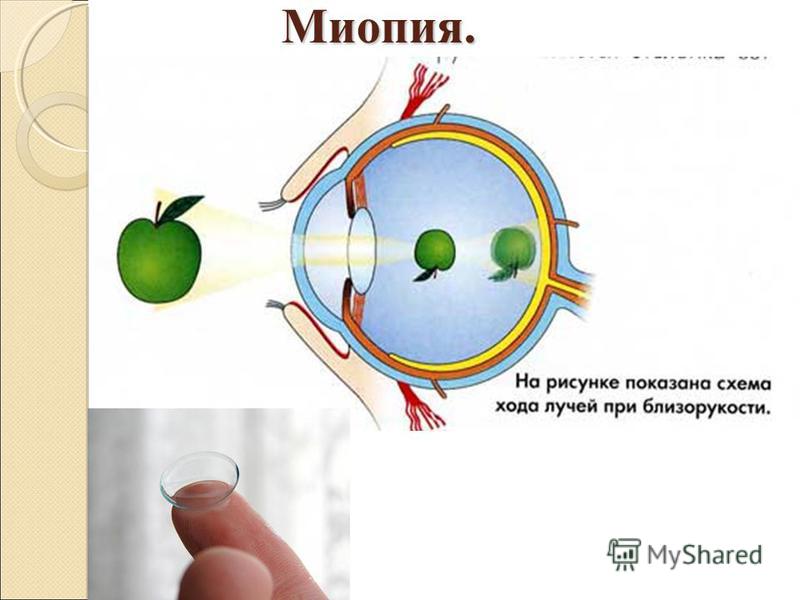
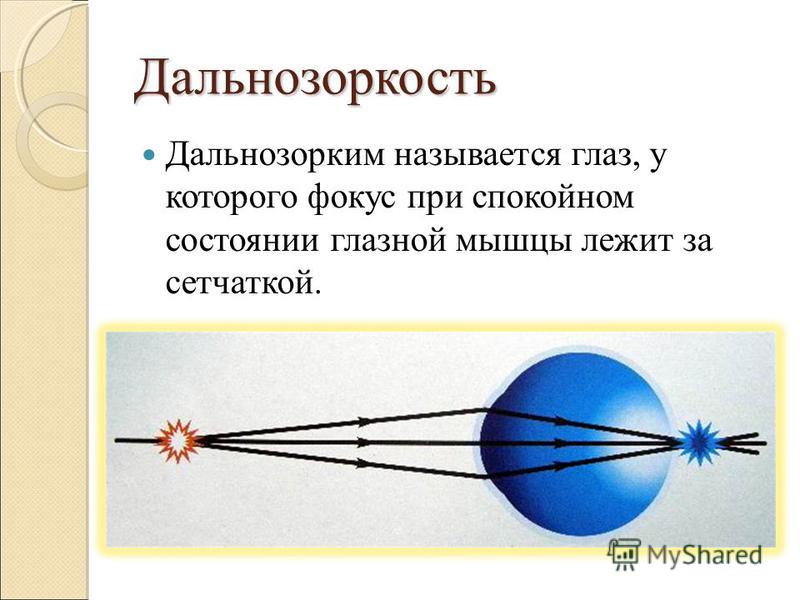
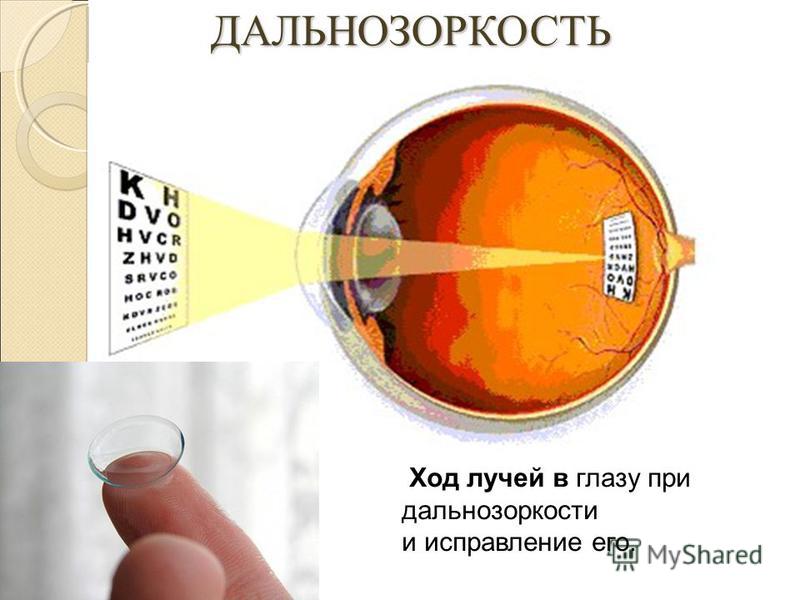
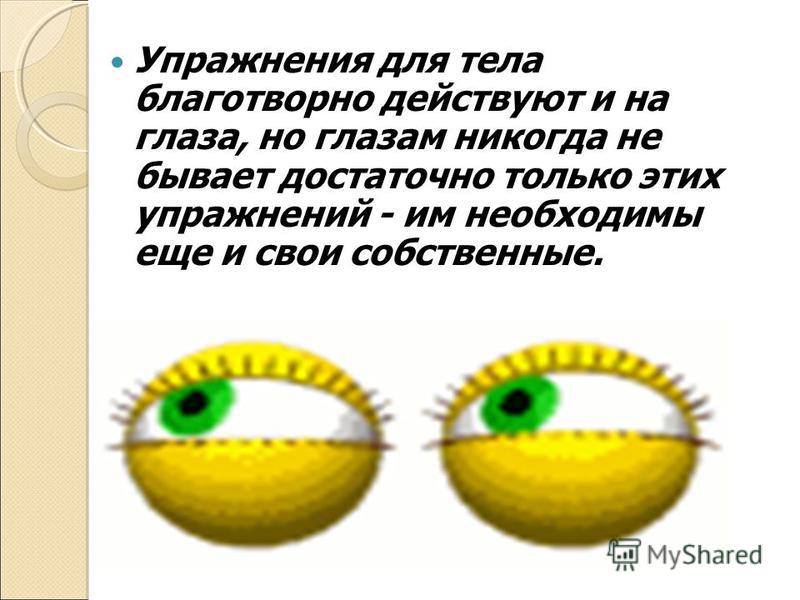
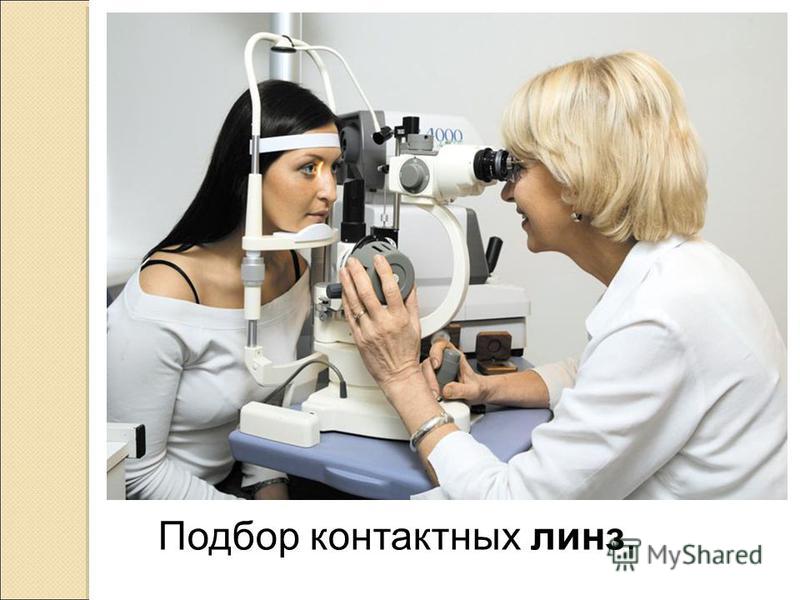
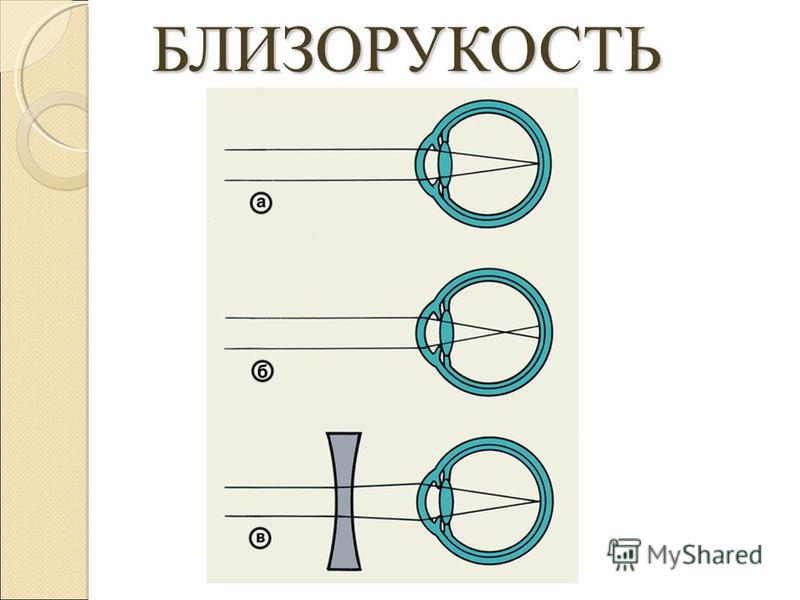
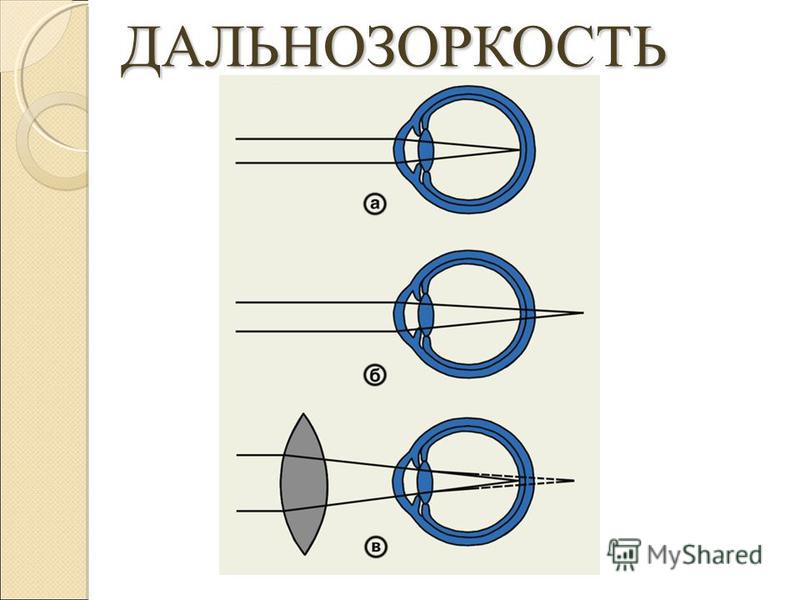
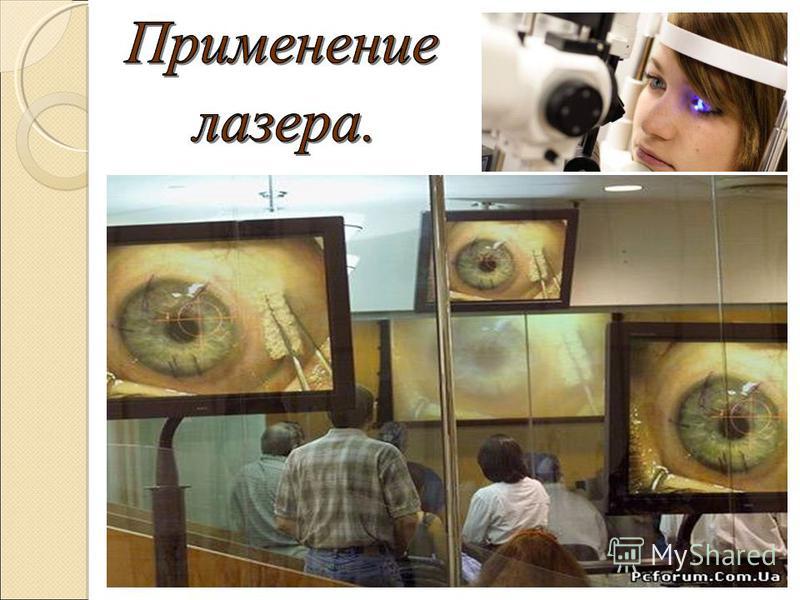

Optical devices equipping the eyes Devices for viewing small objects (magnifiers, and microscopes) Devices for viewing distant objects (telescopes, telescopes, binoculars, etc.) The images of the objects in question are imaginary. Angle magnification - the ratio of the angle of view when observing an object through an optical device to the angle of view when observing with the naked eye (characteristic of an optical device).
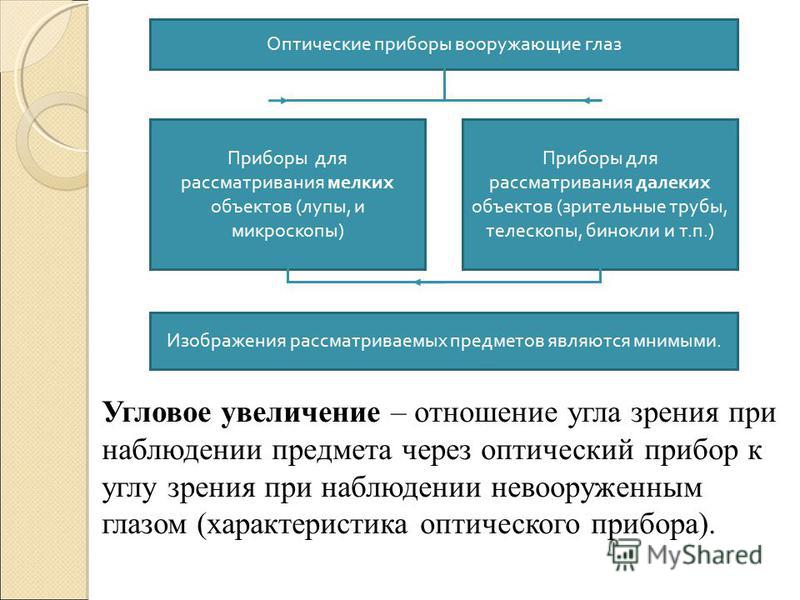
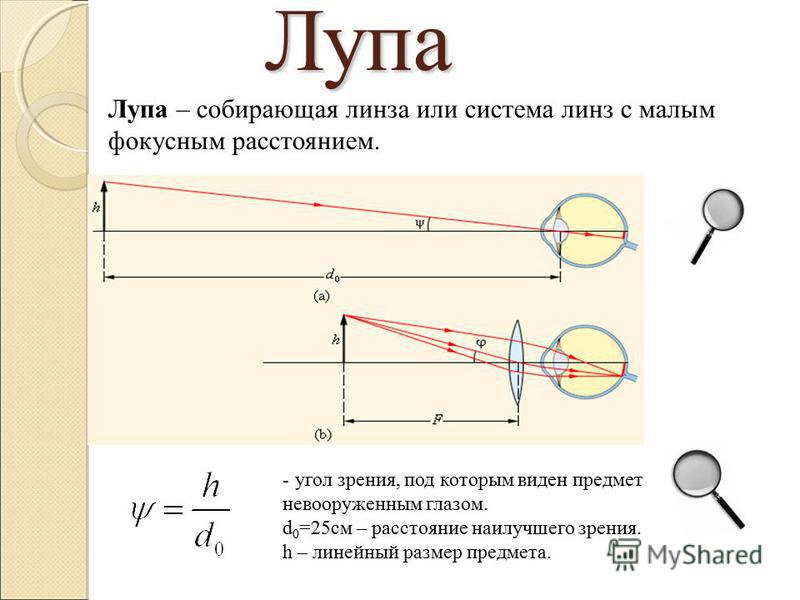
Microscope. A microscope is a combination of two lenses or lens systems. The magnification of a microscope is the ratio of the angle of view φ, under which the object is seen when viewed through a microscope, to the angle of view ψ when observed with the naked eye from the best vision distance d 0 = 25 cm.
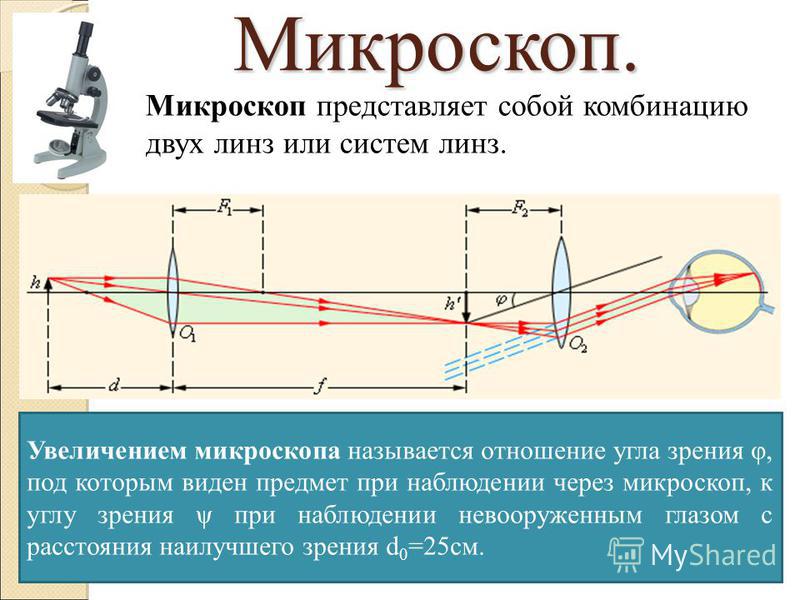
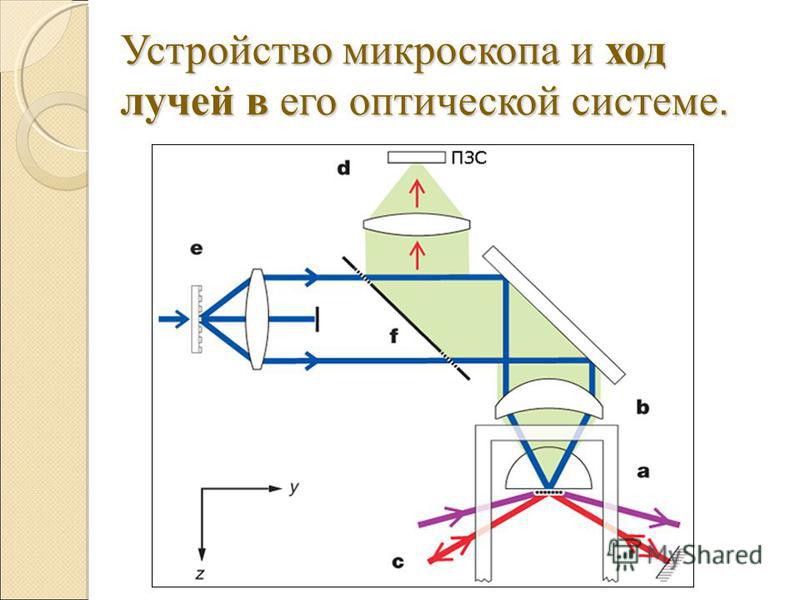
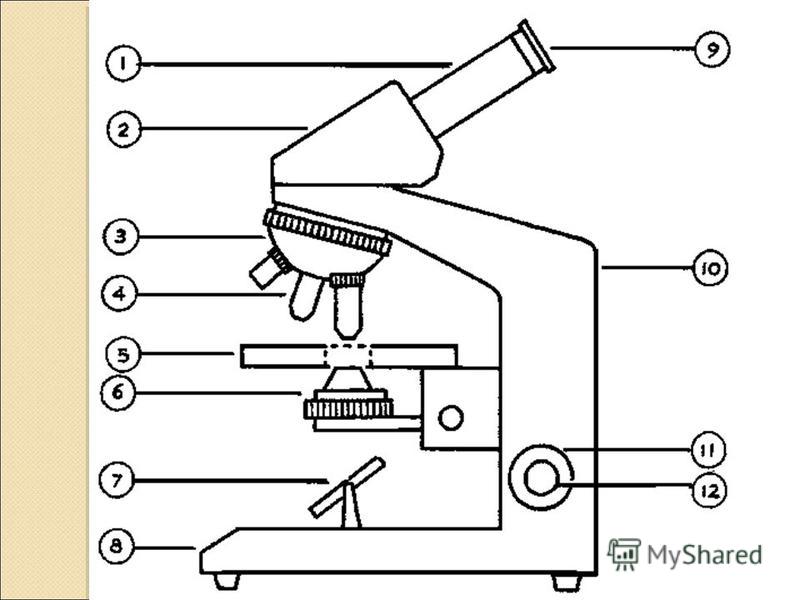
Johann Kepler's Kepler pipe (1571 - 1630) In 1613, it was manufactured by Christoph Shiner according to the Kepler scheme. The lens is a long focus lens. The image of a remote object is obtained in the focal plane of the lens. The eyepiece is from this image at its focal length.
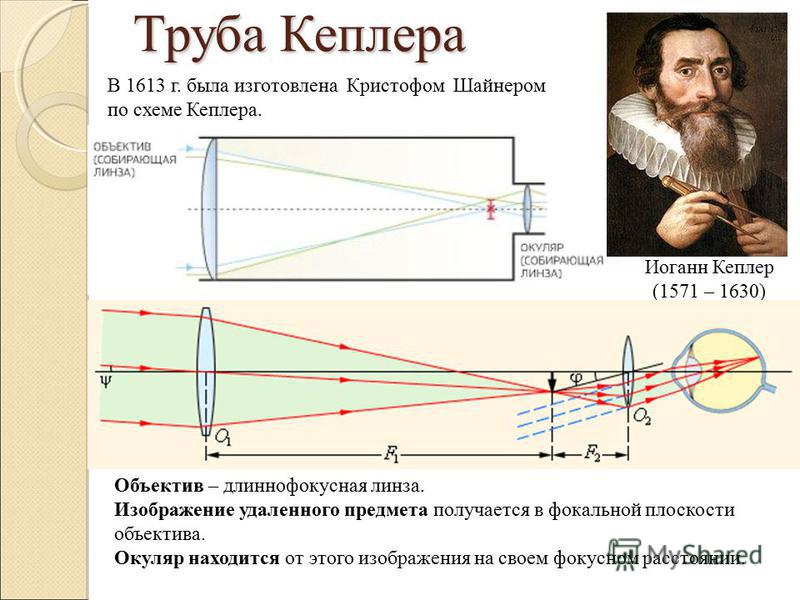 33 The Galilean Tube The Galilean Tube Galileo Galilei () Galileo built the first telescope in 1609 with his own hands. With the help of his pipe with a 30-fold increase, Galileo made a number of astronomical discoveries: Discovered mountains on the Moon, spots on the Sun, discovered four satellites of Jupiter, the phases of Venus, found that the Milky Way consists of many stars. Nowadays, mainly used in theater binoculars.
33 The Galilean Tube The Galilean Tube Galileo Galilei () Galileo built the first telescope in 1609 with his own hands. With the help of his pipe with a 30-fold increase, Galileo made a number of astronomical discoveries: Discovered mountains on the Moon, spots on the Sun, discovered four satellites of Jupiter, the phases of Venus, found that the Milky Way consists of many stars. Nowadays, mainly used in theater binoculars.
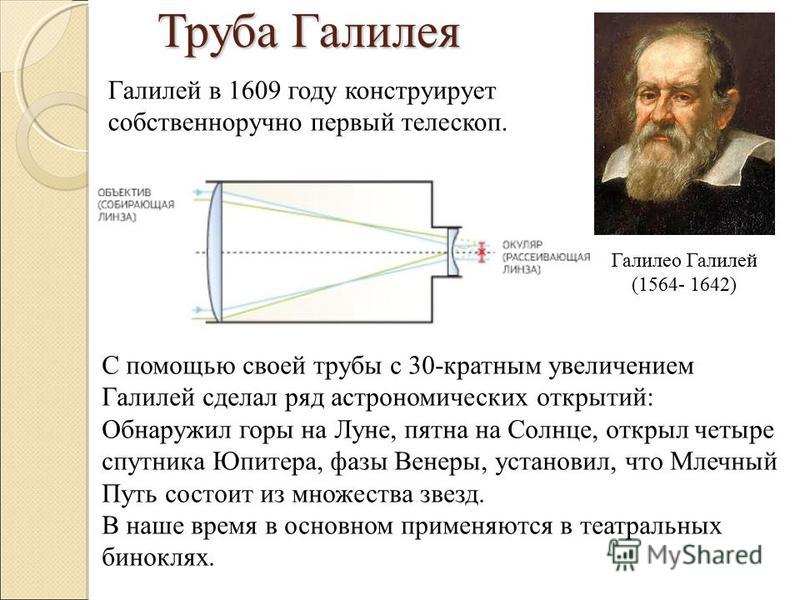

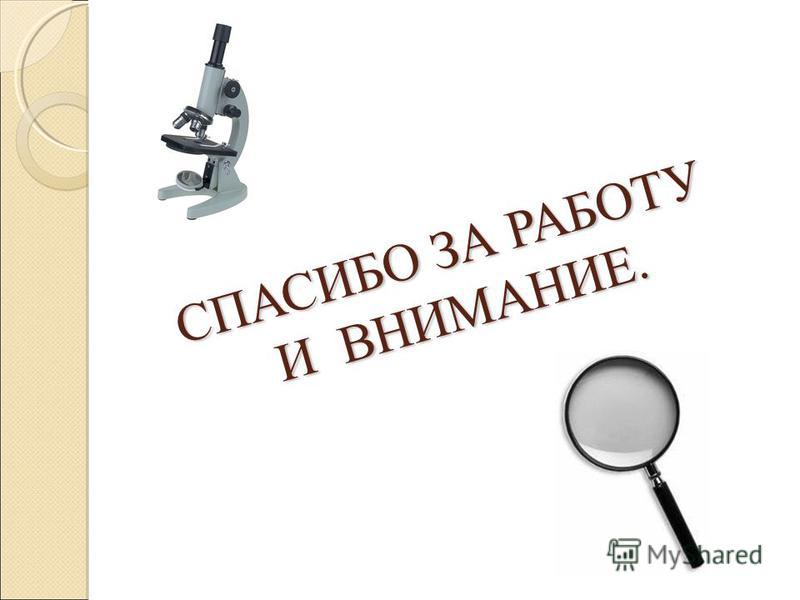
Various kinds of optical devices have allowed people to make many different discoveries. With their help, people discovered the existence of microorganisms and discovered most of the celestial bodies we know today. Not to mention the fact that millions of people use optical devices every day ..
Prehistory
One of the first optical devices used by the great physicist of ancient times, Archimedes. The history of the heroic defense of Syracuse, probably everyone knows, but we will not be able to repeat one of its episodes. With the help of glass and sunlight, Archimedes caused a fire that destroyed the Roman fleet. Is this episode a starting point in the history of using optical devices? Probably, yes, but, nevertheless, not quite. In the end, the brilliant experiments of Archimedes did not spread. Mankind only much later realized the enormous benefits that optics could bring him. In the XIII — XIV centuries. Ekah in Europe have become massively used glasses. They wore them, however, only for reading. Used them in Russia. Thus, reading glasses were always put on by Tsar Alexei Mikhailovich. Here are just handles for glasses appeared only in the XVIII-th century.
One of the first optical device used by Archimedes
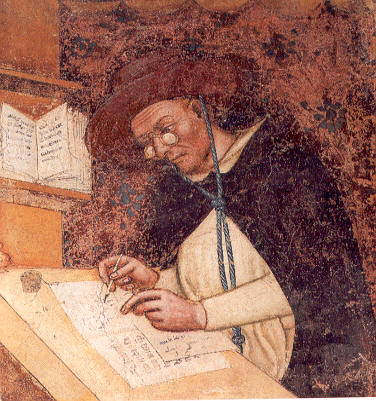
The success of the glasses prompted many scientists to believe that optical devices could have been used differently. In the 15th century in France, the inventor by the name of Jacques Prozhenel tried to create a semblance of a solar cannon. It was based on the principle of Archimedes. The sunbeam, with the help of several magnifying glasses, was supposed to give a flame, which, in turn, could cause a fire. It is not known what the experiments of Prozhenel led to, but the sun cannon was never adopted by France or any other country.
Microscopes and telescopes
The first optical instruments should be considered, of course, microscopes and telescopes. At the time of their creation, Europe had already experienced a kind of optical boom. At the turn of the 16th — 17th centuries, many glass glaziers and scientists experimented with glasses. Among them were Dutch eyewear manufacturers Hans Jansen and his son Zachary Jansen. They created the first microscope in history. It was in the 1590th year. True, it was not they, but Galileo Galilei, who achieved the greatest success in the manufacture of these devices. The great Italian created several varieties of microscopes, some of which he gave to the powerful of the world. Such a gift was received from him, in particular, by the Polish king Sigismund III. Already in the 18th century, Peter the Great appeared in his microscope. The future Emperor saw him in Holland, during his famous journey as part of the Great Embassy. Peter liked the microscope so much that he literally demanded that he be given it. By the time Peter became acquainted with microscopes, the technique of making these devices had made some progress. Back in 1674, the Dutchman Anthony van Leeuwenhoek perfected microscopes, which made it possible to magnify an image 250–270 times.
Galileo created several varieties of microscopes.

Telescopes began to appear around the same time. In 1609, the Dutchman Johann Lipersgay presented the “pipe for studying luminaries” created by him in The Hague. Lipersgey was not given a patent on the basis that something similar had already been created at the Jansen enterprise. His experiments, in those days, continued to Galileo.
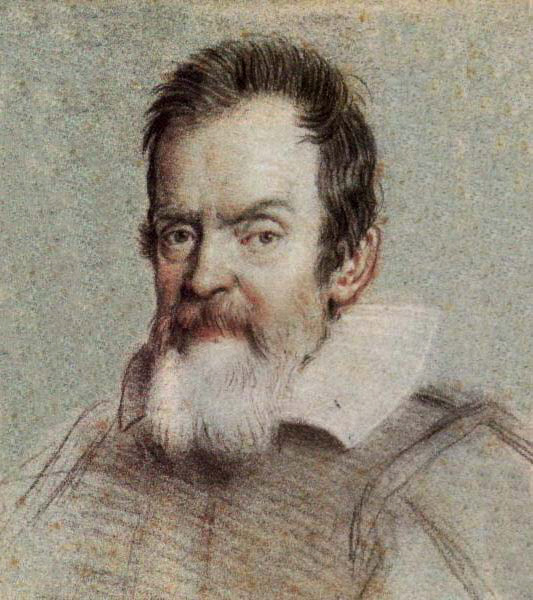
It was he who first directed the telescope to the sky. Later, with the help of this device, people will discover Uranus, Neptune, as well as other solar systems and galaxies.
In Russia
Optical instruments reached Russia with some delay. They appeared mainly in the homes of wealthy nobles, and mainly for fun. It is not known how Peter the Great used his microscope. He looked into it or just kept somewhere. And yet, these devices were well known in Russia. Moreover, foreign businessmen often arrived in many of our cities and started to sell optics. So in the middle of the 19th century the Swiss Theodor Schwabe arrived in Moscow from Berlin (in Russia he was called Fedor Borisovich Schwabe). In 1837, he opened a shop for selling glasses, pince-nez and other small optical devices at Kuznetsky Most. But Schwabe had almost no competitors, for Russia the optics turned out to be a novelty and the business of the enterprising Swiss quickly went uphill. Shop turned into a company, and the company in the company. Shvabe was engaged in the repair and manufacture of very large optical instruments, including periscopes and telescopes. At the beginning of the 50s, Nikolay I turned his attention to the company.
In the 18th century, Peter the Great appeared in his microscope.
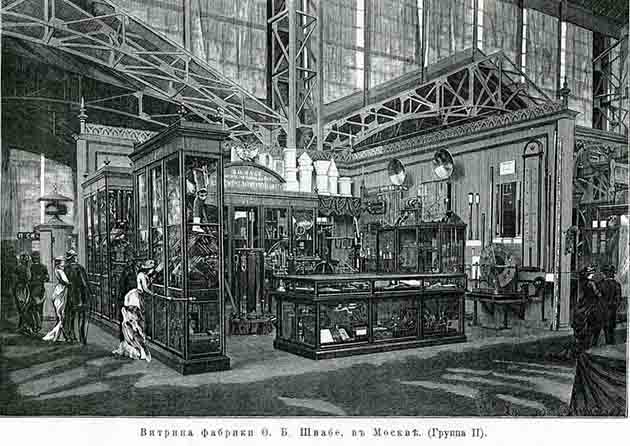
Soon Shvabe became the supplier of the imperial court and almost a monopolist in the production of all kinds of optics. Now, Shvabe is a holding company that is part of the structure of the state corporation Rostec.
State of the art
The demand for optical devices continues to grow. Under the brand "Shvabe" now work 19 research and production associations. Here Rostec produces more than 6,000 thousand different types of optical devices. Three-quarters of these products have a military purpose. Modern optoelectronic equipment is supplied to aviation, to the fleet, and even to space forces.
Now optoelectronic technology is even being delivered to space forces.
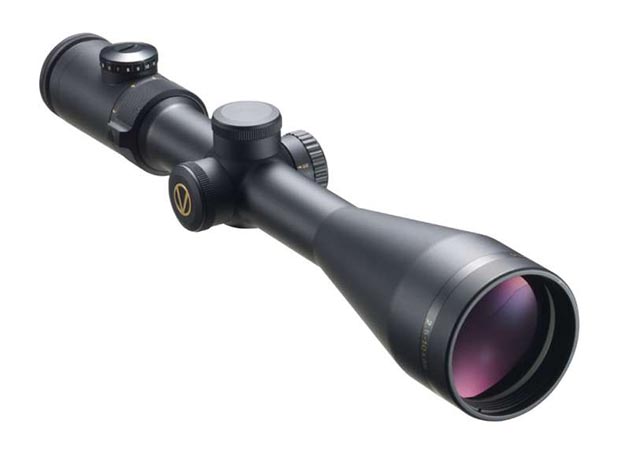
So, on space ships, the devices for remote sensing of the planets surface created by Rostec are installed. In addition, the holding "Shvabe" supplies equipment for medical and scientific purposes. It also produces binoculars and optical sights.
- In contact with 0
- Google+ 0
- OK 0
- Facebook 0


